Placemaking in the polycrisis: The effects of irregular migration trajectories of refugees in Southeast Asia
January 2, 2024
 Associate Professor Gerhard Hoffstaedter, 2024 LKC NUS-Stanford
Associate Professor Gerhard Hoffstaedter, 2024 LKC NUS-Stanford  Fellowship awardee, is visiting FASS from 1 January to 22 March 2024. He is working on ‘Placemaking in the polycrisis: The effects of irregular migration trajectories of refugees in Southeast Asia’, a research project and book that examines 1) how refugees in Malaysia experience life in situations of protracted refuge while having no legal status, and 2) how Rohingya and Chin refugees experience life in a liminal state and how much they have integrated into Malaysian society. His previous single-authored book, Modern Muslim identities: Negotiating religion and ethnicity in Malaysia, explores the relationship between the Malaysian state and Malaysians in creating and maintaining fixed identities, focuses on new ways of being Muslim in a modern world, and develops the concept of ‘Islamicity’ to make sense of contemporary modern Islamic religiosity that is applicable to a range of modernising Muslim countries.
Fellowship awardee, is visiting FASS from 1 January to 22 March 2024. He is working on ‘Placemaking in the polycrisis: The effects of irregular migration trajectories of refugees in Southeast Asia’, a research project and book that examines 1) how refugees in Malaysia experience life in situations of protracted refuge while having no legal status, and 2) how Rohingya and Chin refugees experience life in a liminal state and how much they have integrated into Malaysian society. His previous single-authored book, Modern Muslim identities: Negotiating religion and ethnicity in Malaysia, explores the relationship between the Malaysian state and Malaysians in creating and maintaining fixed identities, focuses on new ways of being Muslim in a modern world, and develops the concept of ‘Islamicity’ to make sense of contemporary modern Islamic religiosity that is applicable to a range of modernising Muslim countries.
We interviewed A/P Hoffstaedter, who teaches in the Faculty of Humanities, Arts, and Social Sciences at the University of Queensland, about his study.
1. How did you becoming interested in studying the lives of Rohingya and Chin refugees in Malaysia?
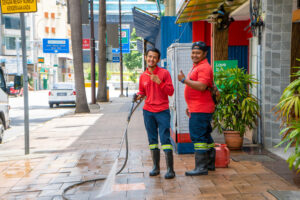
During my PhD fieldwork in the Klang valley with middle class urban Muslims we would often engage with people my interlocutors did not place in the Malaysian identity politics triangle of Malay, Chinese or Indian and often they simply ignored them. They were the grasscutters, waiters, cooks, or cleaners who keep Kuala Lumpur going on a daily basis. Once I started talking to them it transpired that they often were refugees, and the majority were either Rohingya or Chin from Myanmar. So, I became intrigued what their lives were like in Malaysia, and I drifted from Malay studies to refugee studies in Malaysia.
2. While you are here, you will be working on a book chapter titled ‘Farming for a new life in history: Refugee farmers in Malaysia’. What is life like for these farmers? How do they access land in rural areas of Malaysia to farm on? Who buys their produce?
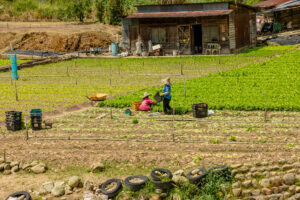
Yes, I am working on a book that documents the varied lives refugees in Malaysia have made for themselves, including becoming farmers. The majority of refugees working on farms do so as labourers on farms in the Cameron Highlands growing vegetables and fruits for the urban markets. However, there are a few farmers who have gained access to land via helpful religious groups and kind Malaysian supporters who help rent the farm and land as well as support them selling the produce at local markets.
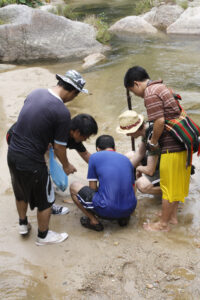
Some of the produce is also transported to the cities. On one farm I spent a couple of weeks at, they grew betel leaves they would sell to fellow refugees in Kuala Lumpur who in turn ran little roadside stalls where they sell the betel quid, or areca nuts rolled into the betel leaves with lime and tobacco added. Another farm functions as a respite place for the refugee organisation to send ill refugees from the city for respite. These are small scale and out of the ordinary as most refugees do not have access to them. However, they demonstrate that even in a life of legal limbo and extreme marginalisation there are pockets of alternative lives or what I call spaces outside domestication (borrowing from Ghassan Hage) where refugees can express their own lives more fully.
3. Another chapter you will work on at NUS is called ‘‘Being’ a refugee in urban Kuala Lumpur: Existential and ontological security’. How do refugees survive in urban Kuala Lumpur? Why do some refugees in Malaysia become farmers and others work in cities?
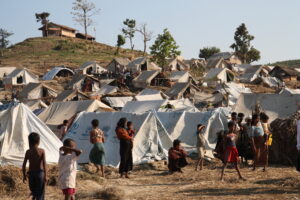
The vast majority of refugees in Malaysia are urban refugees, living and working in urban settings, predominately the Klang valley and Penang. There are no refugee camps in Malaysia and the Malaysian government does not recognise refugees legally, so technically they are all undocumented in Malaysia. There is an unofficial agreement that the United High Commissioner for Refugees (UNHCR) is supposed to register and look after refugees in Malaysia. This follows on from a largely successful cooperation to deal with Indochinese refugees after the Vietnam War through the Comprehensive Action Plan that saw several hundred thousand refugees become repatriated or resettled from Malaysia between the 1980s and 2000s.
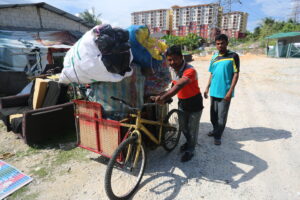
The current majority of refugees are displaced from civil war and genocide in Myanmar and no regional or international plan exists to deal with the large refugee cohort displaced by the ongoing conflicts in Myanmar. The UNHCR in Malaysia does not have the resources to support refugees and only limited funds to help the most vulnerable with access to health, education and livelihoods. Their main work is registering refugees, issuing a UNHCR card that is supposed to safeguard them from immigration detention and harassment from authorities, and ultimately resettlement to a safe third country like Australia, the US, Canada, or Europe. However, resettlement places are limited and with more and more refugees every year, resettlement has become a distant dream for most refugees. Thus, refugees have to fend for themselves in Malaysia, many working in construction, factories, maintenance, and hospitality.

For example, many street sweepers and grasscutters are refugees, as are most of the waiters and cooks in the entertainment district of Bukit Bintang in Kuala Lumpur. They are a convenient, cheap labour force who lack access to the legal employment market and are often prone to exploitation as a result. There are also some examples of successful arrangements I will document in my book, where Malaysians and refugees work together and where refugees create a meaningful and sustainable life for themselves. I want to balance the negative and often depressing reality for most refugees with some examples and instances of alternative realities that afford refugees access to wellbeing, a good life, or just simply recognition.
4. How did the COVID-19 pandemic affect the refugee communities in Malaysia? How has their situation changed since the effects of the pandemic on daily life have lessened significantly in the past year or more?
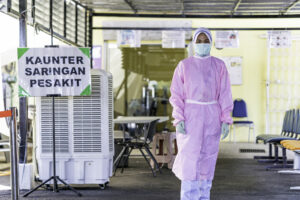
A former student and I have just published this piece on just that issue focussing on Rohingya refugees and the impact of COVID-19. In short, the biggest impact was that refugees became a scapegoat for the government and the public – someone to blame for outbreaks. As a result refugee and migrant neighbourhoods were locked down in security operations. More significantly many refugees lost their jobs, which meant a total loss of income as they were not able to access the government COVID relief payments. This sometimes meant they lost their livelihoods as well as their homes. Many already extremely vulnerable people became destitute. With the loosening of restrictions their frontline services (picking up the garbage, cleaning the streets, building roads, serving food etc.) were in high demand again and things are almost back to pre-COVID times now.
5. What challenges have you encountered when carrying out your ethnographic fieldwork with the Rohingya and Chin communities in Malaysia, Australia, and Myanmar?
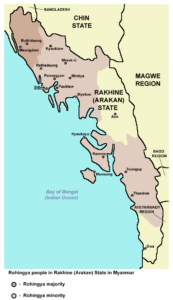
When working with vulnerable populations there are always significant ethical concerns and especially working with people who have no legal status in Malaysia has been challenging at times. In countries like Myanmar and Malaysia the authorities might not encourage researchers to work on topics that make them look bad. I was lucky to be able to go to Myanmar during the civilian led government times when travel restrictions had been lifted, allowing me to travel to Chin state and Rakhine, although the security situation was not great (an IED took out a car the day after I travelled that road to Mrauk U and we heard continuous shelling while we were there). However, I have had my run ins with police in Malaysia asking for my credentials and challenging me as to why I was hanging out with refugees and in neighbourhoods they did not expect to come across a European, I guess.
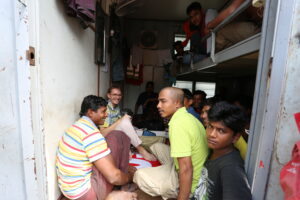
As anthropologists we endeavour to live the lives our interlocutors live, but living with refugees can be challenging as I don’t want to take away precious living spaces from the community that they may need. So, sleeping on the floor or couch for a while is not for the faint hearted in some of the places refugees live. I have had more close-range encounters with pretty big rats I care to remember but it demonstrates just some of the daily realities refugees have to live with as they cannot legally rent homes in Malaysia, making them vulnerable to exploitation and having to pay outrageous rents for rundown squats. This leads to the next challenge we share – health. I got very sick on several fieldwork trips and was lucky to have access to good hospitals and medical services to get medication and treatment, a privilege not shared by refugees who rely on free services from charities or have to pay significant fees that may prevent them from seeking medical help in the first place.
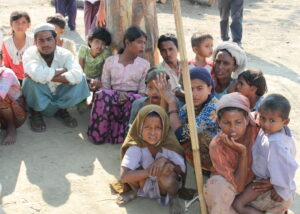
As anthropologists working with vulnerable populations, I have always anonymised interview data for publication and made sure to publish so as not endanger anyone who has shared their stories with me. I have also chosen not to report some stories for ethical reasons, and it becomes a matter of judgement what can and what cannot be said at a given moment about vulnerable people who have entrusted their life stories to us.
6. How do the situations, particularly the migration trajectories, of the Rohingya and Chin refugees differ?
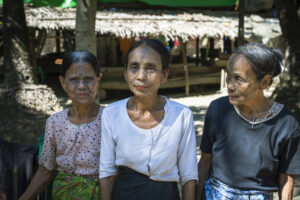
Rohingya have been subject to genocide in Myanmar and Chin discriminated against for decades. Rohingya have fled to Bangladesh and other Muslim (majority) countries like Saudi Arabia and Malaysia for decades, whilst Chin have fled largely to India and Malaysia. In Malaysia the UNHCR had different policies for the two groups, focussing on resettlement of Chin to the US and Australia, whereas Rohingya were deemed potentially eligible for integration in Malaysia. However, the Malaysian government never acted on their promises and overtures to allow Rohingya to stay, meaning that Rohingya were disadvantaged, being resettled at much lower rates than other refugee groups. This has led to a further discrepancy, where Chin have significant and very active diasporas in the US, Canada, and Australia that can provide remittances and political pressure. Rohingya have much smaller diasporas in those countries and often lack the political access to effect government interventions.
7. What do you hope this research project can achieve beyond yielding the publication of an academic book – i.e., improved media coverage of the refugee crisis in Southeast Asia, policy changes etc.?
The book will question the framing of refugees in SEA and more broadly as a crisis by evoking the term permacrisis.
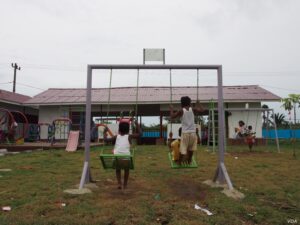
Political instability and outright war in Myanmar have caused displacement for a long time and to speak of a crisis every time things escalate diminishes the underlying factors I want to highlight. I always engage with the media on these issues and hope that the book will trigger a more thorough examination of the ‘refugee crisis’ in Southeast Asia and create the space for more dialogue with policy makers that will lead to better policy outcomes in the future.
Thank you very much for taking the time to share your research with us, A/P Hoffstaedter! We wish you success in your studies in and beyond Southeast Asia!

